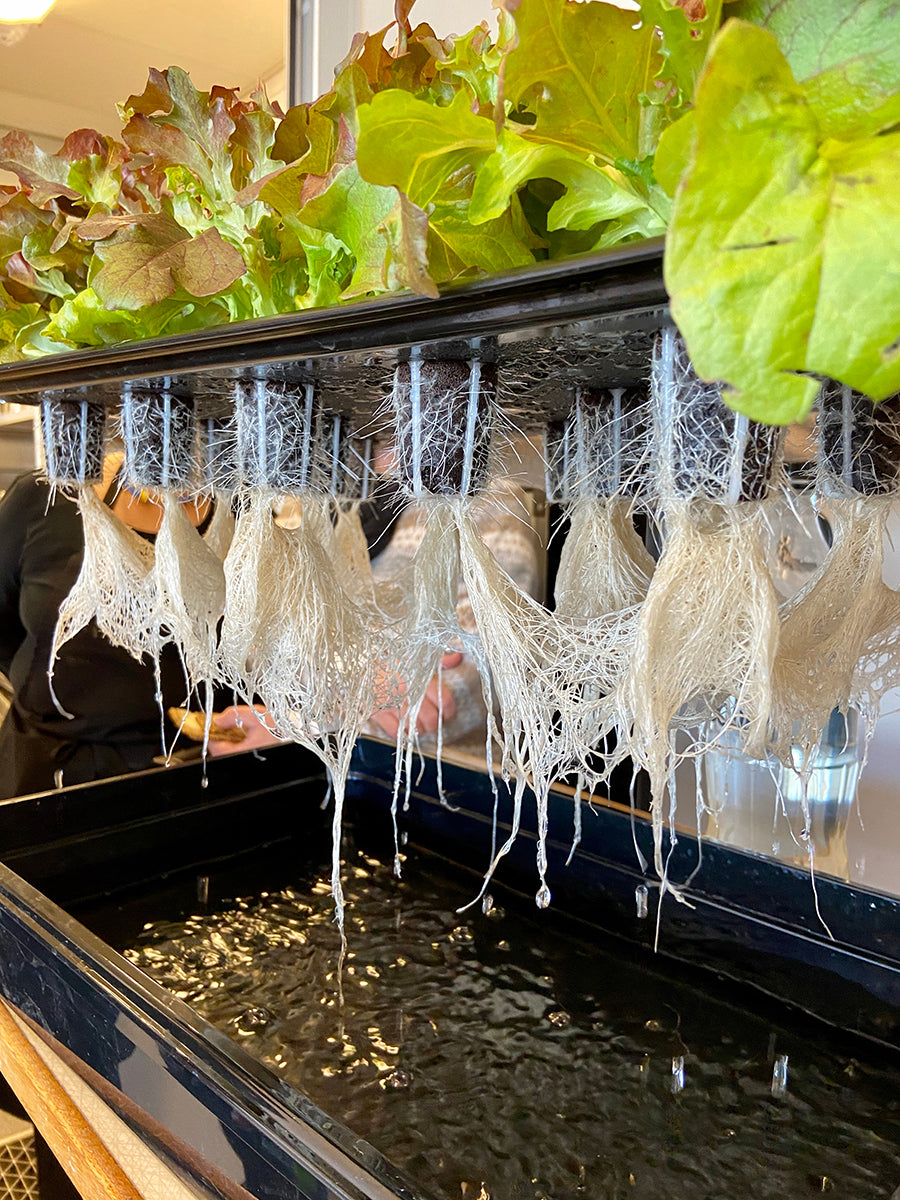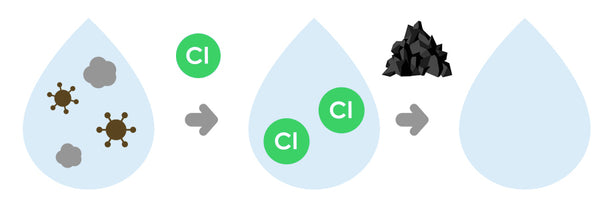Recent Posts
Hydroponic Dechlorination for Stronger, Healthier Plants
How to Dechlorinate Tap Water for Hydroponics

porous material filled with
micro-fissures that capture and contain
numerous chemicals including
chlorine and chloramines
What is the best way to dechlorinate water for use in a hydroponic garden? Most people agree, the easiest and most efficient way is to simply purchase a dechlorination water filter. Dechlorinator filters remove the chemical before the water enters the hydroponic system.
These filters contain activated carbon, a porous material that condenses a large volume of surface area into a very small amount of physical material. A single gram of activated carbon is equal to up to 32,000 square feet of molecule-grabbing surface area! Millions of water treatment systems around the world use activated carbon for a number of reasons, all to ensure proper and safe water quality.
There are other methods to remove chlorine from tap water, such as:
- Leaving the water out in the sun
- “Bubbling” where forced aeration of the water oxidizes the chlorine over time
- Dechlorination tablets typically made of ascorbic acid, neutralize chlorine relatively quickly
- Even boiling the water works if no other options are available
However, carbon filters are the only method that doesn’t require extra time or the need for a holding tank.
Why Dechlorinate Tap Water for Hydroponics?
 With hydroponics, there are two big issues with chlorine and chloramine treated water that growers need to take very seriously if they wish to achieve consistent, high quality yields. The first, if too much chlorine is present in water used for hydroponic farming, plant leaves will first turn yellow, then brown, and eventually the plant will die. This is called “chlorine toxicity”.
With hydroponics, there are two big issues with chlorine and chloramine treated water that growers need to take very seriously if they wish to achieve consistent, high quality yields. The first, if too much chlorine is present in water used for hydroponic farming, plant leaves will first turn yellow, then brown, and eventually the plant will die. This is called “chlorine toxicity”.
The second problem is when using helpful microorganisms such as beneficial bacteria and fungi, all must have chlorine-free water to survive and flourish. When utilized correctly, these tiny creatures help protect roots, increase nutrient uptake and directly affect the quality of and size of yields. Killing bacteria is a good idea for humans, but not necessarily when it comes to water for plants. And, since nutrient solutions are typically calibrated with purified water, the best way to maximize their benefits is to make sure water is chlorine and chloramine-free.
Why Do Commercial Hydroponic Farms Dechlorinate Their Water?
Commercial hydroponic facilities dechlorinate water for a number of reasons that the hobbyist grower can learn from. If a reverse osmosis (RO) filter is used (as we mentioned before, hydroponic nutrient solutions are calibrated with RO water) chlorine and chloramines must be removed prior to the water hitting the filter membrane. Membranes are dense, porous layers of materials that are easily damaged by both chemicals. Without proper pre-filtration to dechlorinate incoming water, the expense to keep functional membranes in place would be enormous.
Commercial hydroponics operations remove chlorine and chloramine for another very simple reason: minimizing troubleshooting. This is known as “controlling all inputs” which enables serious growers to minimize downtime by maintaining consistency by reducing any variables to a bare minimum. Of course, all of the root supporting benefits of dechlorinated water still apply, even on an industrial scale.

Chlorine In Tap Water
Why is chlorine added to public sources of water? The simple answer is, it kills the bad microorganisms that could make water dangerous for humans to consume. Drinking water in North America is regulated for safety, and is either treated with chlorine, or less commonly a chemical variation of chlorine called chloramine.
The two compounds are very similar; chloramine is essentially chlorine and ammonia, bonded on a molecular level. This slight molecular difference allows the antimicrobial function of the compound to reach long distances, without a loss of potency.
Consequently, it’s more difficult to remove chloramines from tap water and require either reverse osmosis filtration or special filters like the HydroLogic Chlorashield. At the regulated amount of 4 ppm (parts per million) both chlorine and chloramines are considered safe for human consumption.
